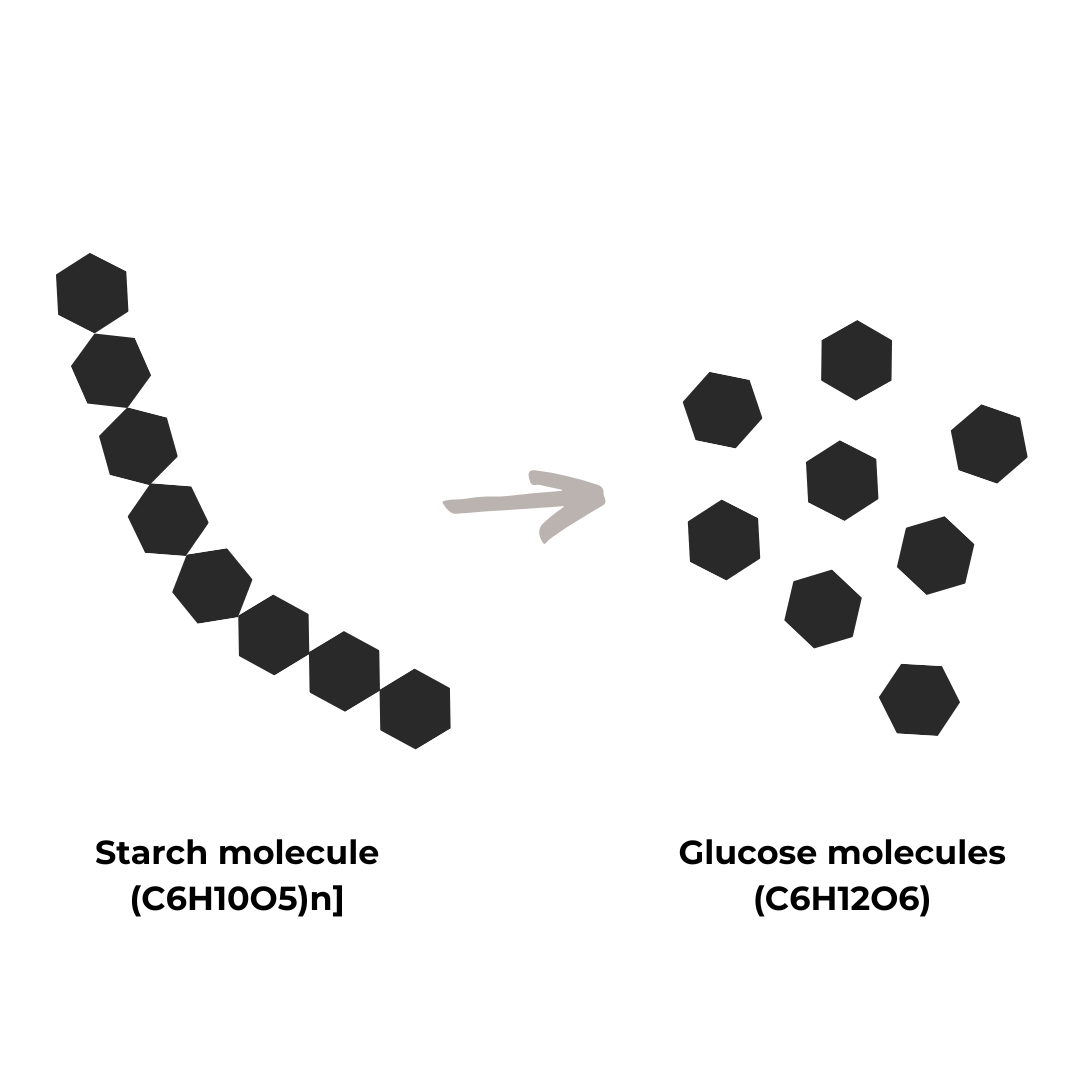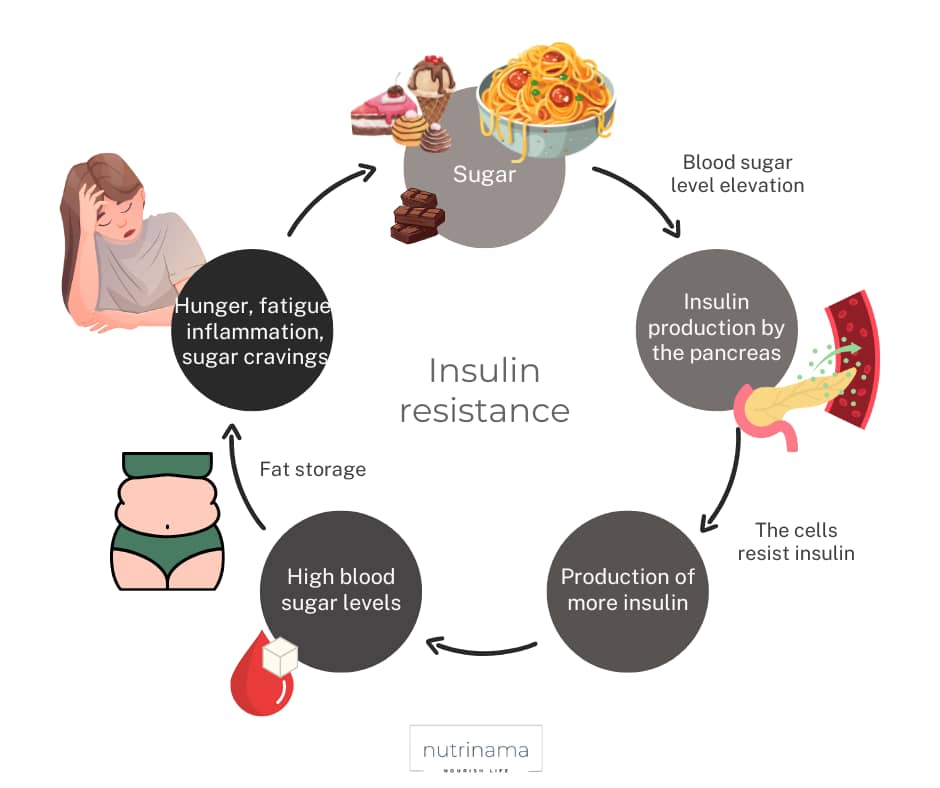3 Simple Tips to Restore Your Metabolism Immediately
Nature, left alone, is in perfect balance.
Fukuoka
Let Nature Do Its Work
- What do we eat today?
We cannot survive without eating. It’s primarily food that connects us to our Mother Earth through the water, air, plants, vegetables and animals we ingest. Food intake should be one of the essential pillars for maintaining good physiological, psychological and spiritual health (mind-body alignment).
Obviously, when our food is deteriorated, our entire being deteriorates in turn.
Recent nutritional surveys reveal that 56% of our calories come from three sources that didn’t exist when our genes developed: refined sugars, white flours and hydrogenated vegetable oils.
Concretely, these are products like sweets, bread, pasta, sunflower or canola oil… The list of processed products is long. Their impact on our health and wellbeing is now causing increasing concern.
The danger is that we’ve become so accustomed to these products that it’s even difficult for us to question their presence on our plate. Yet this nutritional “diversity” that’s omnipresent today is nothing natural for the human species. Humans manufacture the overwhelming majority of products found in a supermarket.
This “food” isn’t found in Nature. Left in our natural environment, we never should have consumed so many processed foods. Because until proven otherwise, chocolate doesn’t grow on trees and pizzas don’t roam around in the forest.
It must be emphasized here that it’s false to believe the human organism is capable of assimilating any food without consequences.
- What did our ancestors eat?
Like every wild species on the planet, our ancestors intuitively knew what was good to eat. Humans were nomadic gatherers and hunters. They also ate meat, fish, eggs, insects, tubers, honey or berries.
Foods were eaten raw and they weren’t contaminated by air and soil pollution that destroys the vitamins in our fruits and vegetables today.
Those who claim to eat chocolate “by intuition” are just finding justification for their sugar addiction.
- What about beverages?
For several million years, our ancestors consumed only one milk – their mother’s. Domestication of dairy species began only about 9,000 years ago. But it’s only from the 19th century that milk and dairy products took the predominant place they occupy today.
Moreover, we still haven’t had time to adapt to this overconsumption. Indeed, globally, 80% of the adult population is lactose intolerant.
Alcohol was unknown in prehistoric times.
Furthermore, we know the brain doesn’t register liquid calories. By drinking a glass of soda or fruit juice, you absorb the astronomical amount of carbohydrates from 3 or 4 oranges, and without fiber.
We’ve also developed an extraordinary range of beverages, making it difficult for us to appreciate a “simple” glass of water! Yet it’s the only drink you crave when you’re thirsty.
- Food adapted to the human body
By returning to our ancestors’ nutrition as much as possible, we can prevent or cure many diseases. Moreover, macronutrition is certainly the simplest method to implement.
The best foods for humans are whole, natural products without labels. If you buy products with a label, make sure the ingredient list is short and that you recognize the ingredients as food.
For example, you know sea salt, but if you read a barbaric-sounding term like monosodium glutamate (E621) or acesulfame-K, there’s little chance your body will metabolize it correctly.
With good nutrition that comes as close as possible to our original diet, the body detoxifies and heals itself.
The Danger of Slow-release Carbohydrates and Whole Grains
The term “cereal” comes from Ceres, the Roman goddess of harvests. During prehistoric times, hunter-gatherers already consumed wild grass seeds.
But currently, cereals represent two-thirds of the calories absorbed by humans, with wheat being the most cultivated cereal in the world.
You think you don’t eat sugar or very little?
Think again!
All cereals, potatoes, rice, pasta and more generally flour-based foods are actually sugars.
Here for example are the nutritional values of a packet of whole wheat spaghetti:
- Fat: 1.5g
- Carbohydrates: 75g
- Sugars: 2.7g
- Protein: 13g
You read: 2.7g of Sugars which makes you think there isn’t much sugar in this pasta. But the real sugar value is indicated under Carbohydrates. And there, it’s a crushing 75g per 100g of product. By comparison, in 100g of Nutella there are 57g of carbohydrates. By eating cereal-based products, you potentially ingest more sugars than in sweet products.
These carbohydrates present in very large quantities in cereal products are actually starch, a form of sugar storage in plants. Starch is a complex carbohydrate molecule that will be broken down in your body into smaller sugar molecules.
Complex sugars are simple sugars holding hands.
It’s the same for oats, wheat, rye, quinoa, gluten-free products and even the very popular sourdough bread.
Complex carbohydrates don’t take any longer to be absorbed by your body. In reality, all sugars (including flour-based products) have more or less the same absorption speed and arrive in the blood about 30 minutes after ingestion.
What’s the problem exactly?
What’s dangerous in itself isn’t so much excess sugar but the body’s ability to metabolize it correctly.
All sugars trigger a release of insulin, a hormone that helps glucose enter our cells and also promotes fat storage. This is a normal body reaction. However, any somewhat strong sugar intake triggers a dysharmonious insulin secretion.
The food insulin index varies from 0 to 100, representing the amount of insulin our body releases in the 2 hours following consumption of a particular food compared to a reference food, white bread which has a score of 100.
It’s now proven that high insulin levels promote weight gain, particularly in the abdominal area. However, excess fat located in the upper body increases the risk of developing type 2 diabetes, high blood pressure or cardiovascular disease.
With repeated insulin spikes, our cells become insulin resistant. Glucose no longer enters them and without glucose, the cell can no longer produce energy and function optimally. Insulin resistance sets in.
Insulin resistance is diagnosed by taking blood glucose measurements: fasting blood test, then – after a personalized glucose intake – blood is drawn and insulin and blood sugar levels are analyzed.
Here are some signs of insulin resistance:
- Dark skin patches. Velvety, darkened areas of skin around the neck, armpits, groin, or knuckles (acanthosis nigricans)
- Skin tags like small, fleshy growths, especially around the neck and underarms
- Post-meal drowsiness, extreme fatigue 1-3 hours after eating, especially carb-heavy meals
- Apple-shaped weight gain. Fat accumulation around the midsection and internal organs
- Intense sugar cravings and uncontrollable urges for sweets, bread, and processed foods
- Energy crashes: roller coaster of energy highs and lows throughout the day
Specific signs for women:
- Irregular periods: cycles longer than 35 days, missed periods, or very heavy bleeding
- Fertility issues: difficulty getting pregnant or recurrent miscarriages
- Excess hair growth
- Adult acne, especially around jawline and chin
- Hair loss, thinning hair or male-pattern baldness starting at temples or crown
- Stubborn weight gain. Difficulty losing weight despite diet and exercise efforts
Many people have insulin resistance for years without obvious symptoms, making these subtle signs crucial to recognize early.
Add (Good) Fat for Your Cholesterol
We all need cholesterol to survive. Our body makes it. You’ve certainly already heard that there’s “good” and “bad” cholesterol. Doctors measure bad cholesterol and recommend lowering it. Sometimes they prescribe statins which inhibit cholesterol production.
“Bad” cholesterol, aka LDL, is widely associated with cardiovascular disease risk. But did you know that LDL particle size varies: large and buoyant as opposed to small and dense. It’s precisely these latter ones that accumulate in arteries creating atherosclerotic plaques.
Statins or a low-fat diet don’t act on these problematic small LDL particles but on the large ones, which aren’t associated with cardiovascular risk.
Moreover, the presence of small dense LDL particles is very largely associated with insulin resistance. Thus, a diet low in carbohydrates and rich in good fats (fat meat, olive oil, duck fat, ghee, coconut oil…) leads to a decrease in small dense LDL particles and thus reduces cardiovascular risk.
It will take many years to convince the general public that dietary cholesterol and saturated fats aren’t the villains and that it’s actually sugar, bread, rice, pasta and sugary drinks (including juices and smoothies) that should be avoided rather than fats. For example, despite popular press headlines proclaiming it’s now acceptable to eat eggs, the false belief that egg yolks should be avoided is still widespread.
It’s urgent to start repairing the damage caused by dietary advice given over recent decades.
Don’t wait to make a change for your health. Heard about keto ?
Dr SEIGNALET Jean, “L’alimentation ou la troisième médecine”, Editions du Rocher, 2012
Dr LUSTIG Robert, Metabolical: The Lure and the Lies of Processed Food, Nutrition, and Modern Medicine, Yellow Kite, 2021
FROYEN E. The effects of fat consumption on low-density lipoprotein particle size in healthy individuals: a narrative review. Lipids Health Dis. 2021 Aug 6;20(1):86. doi: 10.1186/s12944-021-01501-0. PMID: 34362390; PMCID: PMC8348839.
https://www.ncbi.nlm.nih.gov/pmc/articles/PMC8348839/
MALHOTRA A., Saturated fat is not the major issue, BMJ, 2013
Dr BERRY Ken, Lies My Doctor Told Me: Medical Myths That Can Harm Your Health, Victory Belt Publishing Inc., 2019
Copyright ©Nutrinama Ekaterina Choukel
The contents of this blog, including text, images and statistics as well as any other material on this website (referred below as “content”) are for informational purposes only. The content is not intended to be a substitute for medical diagnosis and/or treatment and is not suitable for self-administration without the knowledge of your doctor. Do not disregard medical advice and always consult your doctor for concerns you might have regarding your health condition or before acting on anything you have read or heard in our content.



